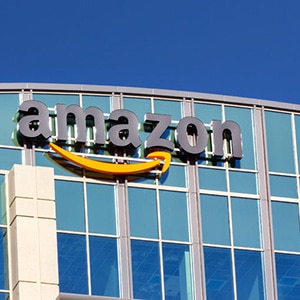 When does a loyalty program become so big that it can affect the marketplace? When it becomes as big as Amazon Prime Day. The three-year-old event, held annually in mid-July and offering exclusive discounts and deals to Amazon Prime members, has grown to become a summertime Black Friday sales-apalooza that other retails ignore at their peril. A new study from sense360 reveals that Prime Day has become such a big deal for Prime members that it reduces foot traffic to brick-and-mortar retailers. Is it time for the retail world to bow to Jeff Bezos as their forever-lord and emperor? Or is there a way to fight back?By Rick Ferguson
When does a loyalty program become so big that it can affect the marketplace? When it becomes as big as Amazon Prime Day. The three-year-old event, held annually in mid-July and offering exclusive discounts and deals to Amazon Prime members, has grown to become a summertime Black Friday sales-apalooza that other retails ignore at their peril. A new study from sense360 reveals that Prime Day has become such a big deal for Prime members that it reduces foot traffic to brick-and-mortar retailers. Is it time for the retail world to bow to Jeff Bezos as their forever-lord and emperor? Or is there a way to fight back?By Rick Ferguson
Chain Store Age has the stats culled from an infographic released by sense360, and the tale told by these stats is sobering indeed. Money quote:
"Prime Day 2017 was Amazon's biggest event yet. But the shopping marathon took a significant toll on brick-and-mortar traffic. [Sense360] observed over 1.1 million visits during Tuesdays from March 7 to July 11 (excluding July 4), and during Amazon Prime Day, and compared results to the entire retail industry. The visits were segmented by people who did and did not have the Amazon app installed on their phones.
"Overall, retailers saw a 32% decrease in traffic among shoppers that have the Amazon app installed. They also had a 7% decrease in traffic among shoppers that don't have the Amazon app. Ten retailers — Walmart, J.C. Penney, Macy’s, Barnes & Noble, Home Depot, Lowe's, Sears, Kohl's, Target and Best Buy — saw an average 24% decrease in traffic on Prime Day compared to averages during the prior 17 Tuesdays.
"Among the companies experienced the biggest drop in visits were Sears (-36%), J.C. Penney (-34%), and Kohl's (-31%). The three retailers that weathered the storm the best were Macy's (-9%), Barnes & Noble (-11%) and Best Buy (-19%), according to the data. Walmart specifically, saw a 23% drop in traffic."
More evidence of Prime Day’s effect comes courtesy of eMarketer:
“It all worked this year: ‘Tens of millions’ of Prime members globally bought something on Prime Day, more than 50% above last year, Amazon said. While Amazon didn’t give any specific sales figures, a Hitwise study found that Prime Day 2017 yielded 9.5 million transactions on Amazon.com, the biggest day of the year and topping Black Friday and Cyber Monday. The number was almost double the 5.1 million transactions Hitwise measured on the first Prime Day in 2015.”
Yee-ouch - it certainly doesn't appear that Walmart's push into ecommerce has yet enabled it to make inroads into Amazon's Prime customer base. The problem? According to Retail Leader, retailers have been slow to recognize the threat from Prime Day. Money quote #3:
"Prices for key shopping categories were consistently lower for holiday shopping events like Black Friday and Cyber Monday than on Prime Day according to a recent pricing study by Market Track. Across the categories and listings reviewed in the study, 74% were priced lower on Black Friday than Prime Day, and 72% were priced lower on Cyber Monday. The only category reviewed in the study that was priced lower, on average, on Prime Day than Black Friday or Cyber Monday was television sets. Despite these figures, Prime Day is undoubtedly growing. In a nationwide survey of 1,200 consumers, 58% stated that they plan to shop Prime Day sales, up from the mere 34% that participated last year. The growth comes, in part, because of Amazon's increased participation in its Prime program and momentum from the publicity surrounding previous Prime Day discounts."
Next year, we may expect retailers to respond en masse to the Prime Day juggernaut; some retailers, including Best Buy and Walmart, offered competing promotions and matched Prime Day deals this year. Still, are slash-and-burn discount offers the best way for retailers to respond?
Bear in mind that Amazon doesn't offer these deals to everyone: To access the deals, you have to be a $99-per-year-paying member of Prime. Prime Day may certainly have an acquisition effect, as curious holdouts finally plunk down the membership fee to take advantage of an enticing deal. Its primary purpose, however, is as a retention-oriented soft benefit for current Prime members. Once a year, Amazon reinforces the value of its relationship to Prime members via a special pricing promotion. It's a demonstration of loyalty - and it's so effective that Amazon competitors are now feeling the pinch.
Instead of responding by recreating Black Friday in July, retailers might respond by offering similar relationship-building offers to members of their own loyalty programs. Perhaps you know via survey which of your members are also Prime members. Strike a preemptive blow by offering an exclusive shopping day for those members in June, a few weeks before Prime Day. If you have the ability, counterprogram in real-time against Prime Day deals through your own program app. Use the opportunity not to throw discounts against the virtual wall to see what sticks, but rather to demonstrate commitment to your own customer relationships.
Amazon is Amazon largely because of Prime, and Prime works because it exhibits classic loyalty marketing best practices. The best way to beat them is to join them - by focusing your marketing efforts on your own best customers.
Rick Ferguson is Editor in Chief of the Wise Marketer Group.


